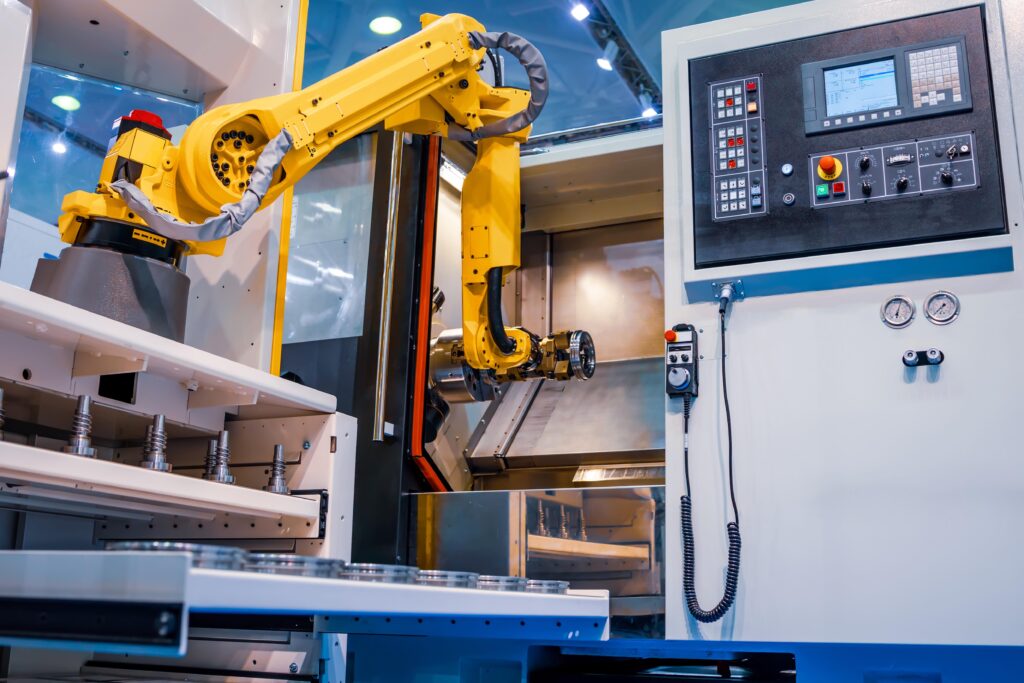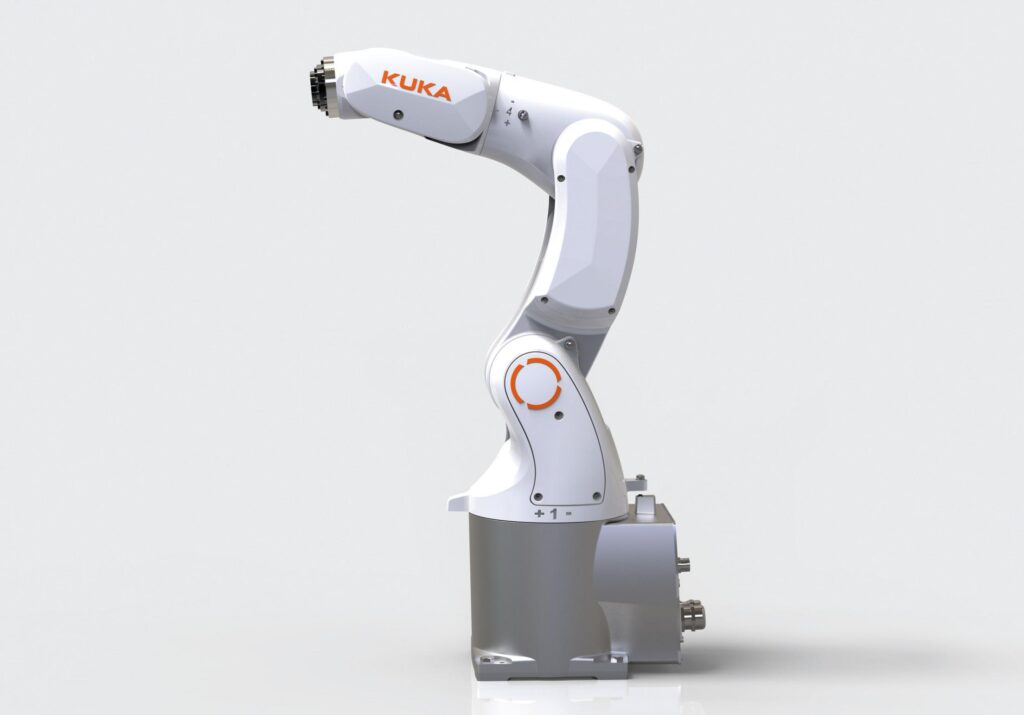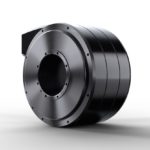Advanced robotics for industrial and consumer applications demand sophisticated power-dense motion components for joints and linkages that must run smoothly, often at high torque and relatively low speed. The challenge is compounded when the robotic application must also make precise moves. At the core of most leading robotic-actuator options are electric motors. That’s because motor-driven designs minimize backlash, friction, weight, and inertia while maximizing efficiency, speed reduction, and power density. The robot’s kinematic arrangement and scale dictate which kind of motor and mechanical components such as gearing are most suitable.
Here we omit study of actuators for end effectors and robotic gripping — a complex topic in its own right — and focus on top electric-motor-driven actuation options for today’s commercially available robotics.

Motion components in AGVs and autonomous mobile robots (AMRs)
AGVs and autonomous mobile robots (AMRs) usually necessitate use of dc-motor-based systems for their free-roaming battery-powered operation. Because the kinematics are fairly traditional, actuators on their axes (unlike their advanced and oft-proprietary software and sensor systems) are fairly common to other industrial applications.
But there are special requirements: Robotic actuators that lift masses consume more power than those that move loads horizontally, so as in other robotics (such as Cartesian robots) vertical-lift actuators in AGVs and AMRs usually runs at high torque and low speed through a high-ratio gearhead. Though less efficient than other gear offerings, here worm gearsets resist backdriving, so can help prevent loads plummeting downwards during potential system failures.

Another caveat is that actuation of AGVs and AMRs necessitates movement of the whole robot mass, so there’s almost always gearing in the electric-motor-driven drivetrain. Gearmotors excel in delivering drive rpm and even positioning where AGVs or AMRs use skid steering. Consider Wittenstein iTAS servodrive wheel axes — specifically for AGVs. Twin servomotors include helical low-backlash planetary gearheads and VULKOLLAN wheels.

Otherwise, dc-motor-driven rack and pinion assemblies steer AGVs and AMRs.
Note that dc-motor-based actuators also drive simpler self-propelled robots for small tasks. For example, most floor-cleaning Roomba robots use an array of five brushed dc motors leveraging mostly plastic spur geartrains to reduce speeds from about 3,500 and 10,000 rpm to speeds better suited for floor-cleaner pace and brush beating. In similar consumer-grade or lightweight commercial robotics where higher efficiency and compactness are design objectives, the actuators may pair planetary gearing with the motors instead.
Motion components in collaborative robotics
Many collaborative robots (cobots) such as those from Universal Robots (UR) employ compliant actuators to get soft and forgiving movements suitable for uncontrolled spaces. When the actuator takes the form of a series elastic actuator (SEA), compliance is from a simple (though highly engineered) mechanical spring in series with the electric-actuator body. While unsuitable for robotic axes needing nanometer precision without sensor-based compensation, such robotic actuators can protect nearby personnel from harm.
In fact, compliant actuators for robotics reflect less load inertia back to the driving motor and can even decouple motor inertias from axes during collisions with environmental elements or people. Plus they protect gearboxes upstream in the drivetrain from shock while concurrently reducing the effects of backlash on end-effector tasks.

Some larger cobots than can’t tolerate the sacrifice of payload and performance for safety use software-based systems to work safely around personnel. These maintain controllability bandwidth while using realtime controls for virtual or active compliance. Software tracks environmental forces and slows or reduces robot-joint output to gently comply to external forces. Besides ensuring safety, on machine-tending tasks that can actually boost throughput.
On some of these cobots, strain-wave gearsets are used for robot-arm articulation. High torque and zero backlash are key benefits. Strain-wave assemblies make the collaborative-robot arms light and portable. Single-stage 100:1 gear assemblies can deliver 120 Nm for all six robot axes to allow payloads to 6 kg.
In fact, other flat actuators could soon expand cobot designs beyond industry-standard 90° linkage series for fewer pinch points and more joint range of motion. For example, LiveDrive actuators from Genesis Robotics are ultra-thin actuators that could soon be applied to rotate cobot joints to vertical; wedges between the motors could act as rotating inclines to impart safety as well as mechanical advantage at each joint.

Motion components in Delta robotics
Delta robots (spider robots) use actuation designed for quickness to thousands of small moves per minute in some cases — which is required for pick-and-place applications where they’re often used.
The main advantage of delta robots is a dynamic kinematic linkage arrangement driven by stationary motors above. As in other robotics, brushless dc motors are standard for their controllability, dispersal of heat, compactness, and relatively low-inertia rotors. Otherwise, closed-loop stepper gearmotors (high-pole motors paired with gearheads) or even gearless variations are used. For example, miniature-sized Asyril PocketDelta robot cells employ three brushless EC-i 40 motors from maxon precision motors to drive linkages.

On larger delta robots, many manufacturers have migrated from use of rack-and-pinion drives to servo actuators based on planetary gearsets. Some such gearmotors pre-integrate lever arms for a lower part count and better cleanability.
Motion components in assistive robotics
Assistive robotics such as power limbs, programmable prosthetics, exoskeletons, and soft robotics serve amputees, soldiers in combat, and industrial-environment personnel at risk of strain and repetition fatigue. For more information on actuator technologies for these robotics, visit designworldonline.com and search exoskeleton. Two growth markets for permanently installed assistive robotics include:
- Healthcare robot arms to replace bulky patient gantries
- Robotic power lifts for industrial settings that let operators grab controls near the end effector to trigger lifting of heavy items in a zero-gravity function.
Most of these designs take the morphology (and employ the actuator technologies) common to six-axis robots.
Otherwise, orthotic systems (for patient rehabilitation) and wearable assistive robotics use compliant actuators such as SEAs. These let the systems yield to disturbance forces and (where useful) leverage the dynamics of natural biological locomotion to boost design efficiency. Traditional actuation that would otherwise force limbs on set trajectories is unsuitable, which is why these dc-motor-based designs run specialized impedance controls and feedback to allow user navigation of unmapped spaces without fixed position controls.
Another challenge for power-limb actuation is that regular walking induces recurring impact forces in the form of heel strikes. Most gear types are damaged by shock, so fluid-power actuation once led such robotics. But now direct-drive motors (which withstand shock and impact forces) or motor-driven designs with strain-wave gearing are on the rise. Consider robotic exoskeletons: High torque requirements necessitate high gear ratios even while the design must stay compact. So some exoskeleton engineers specify strain-wave gears for their ability to satisfy the design requirements and tightly integrate into the joint’s mechanical assembly.

Motion components in SCARAs
Selective compliance assembly robot arm (SCARA) and polar robots are like Cartesian robots in that many use motion and power-transmission components employed in non-robotic motion applications. Visit therobotreport.com for more on the construction of SCARAs.
Motion components in Cartesian robots
Cartesian robots — detailed extensively at linearmotiontips.com — include linear-motion components such as linear slides and guides with motor-driven leadscrew or ballscrew actuators as well as rollerscrews for critical axes. One side note here: Linear-motion technologies used in Cartesian robots also find use in other robot kinematics. For example, seventh-axis robot transfer units (RTUs) are spurring new modes linear-motion actuation that combine long strokes with exceptional accuracy. Or on six and seven-axis robot arms, linear-actuator technologies drive parallel-rod linkages with motors fixed at the base for extension and retraction from below or above; that makes for better dynamics with lower joint inertia and (where there’s multiple degrees of freedom) independent joint control.

Motion components in six-axis robots
The free arms known as six-axis robots are leading innovation. Actuation is through geared motors at each joint for axis rotation … which in many commercially available designs, occurs through timing-belt drives. Then feedback and controls track position to take the associated robot joint through to its target for a given end-of-arm position.
Six-axis robot bases (which need high torque) often employ motors with planetary or cycloidal gearing. In larger industrial arms, these are ac motors. In contrast, six-axis wrist axes employ everything from gearmotors based on spur gearing (where efficiency at low price is the top objective) to strain-wave gearing (where accuracy is paramount). For the latter, some strain-wave gears let robots make quick moves without exhibiting shock or velocity ripple at the output, as the zero-backlash nature of actuators based on such gearing allows higher servo-gain settings to boost accuracy and dynamic performance.
Consider Kuka’s KR AGILUS robot series for quick material handling. In these, precision strain-wave gears get 30% more torque capacity and 40% longer life than previous iterations. That’s thanks to a customized wave generator and optimized the gearing circular spline teeth and flexspline.

One trend is more six-axis robots than ever are employing actuators based on frameless motors. Robotic actuators based on stepper motors are also making inroads, as the ability to omit gearing and the rise of closed-loop stepper control can deliver fairly compact and dynamic robot actuation. Where six-axis robots have grown especially large — as in the case of the massive ABB IRB 8700, capable of maneuvering payloads to 1,000 kg — another trend is towards consolidation of dual-gearmotor arrangements at each axis to a single motor-gear drive for each degree of freedom.








Leave a Reply
You must be logged in to post a comment.